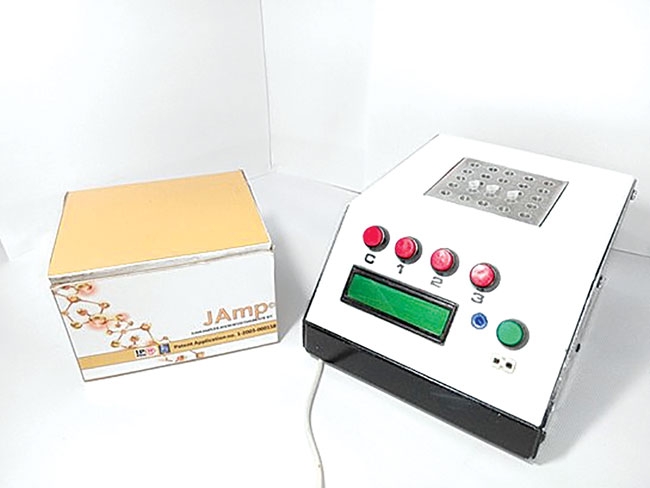
News & Views
Philippines university tech detects WSSV in shrimp
A university in the Philippines has developed a detection tool that aims to help the Philippines shrimp industry in its battle against the white spot syndrome virus (WSSV).
June 25, 2019 By Ruby Gonzalez
 The JAmp WSSV Diagnostic Kit. Early detection and monitoring efforts are the most effective strategy in minimizing impact of WSSV A university in the Philippines has developed a detection tool
The JAmp WSSV Diagnostic Kit. Early detection and monitoring efforts are the most effective strategy in minimizing impact of WSSV A university in the Philippines has developed a detection toolThe JAmp (Juan Amplification) WSSV Diagnostic Kit, developed by Dr. Mary Beth Maningas, a professor at the Manila-based University of Santo Tomas, can amplify target viral DNA using one amplification temperature and give results in one hour.
WSSV is characterized by presence of white spots in the carapace of the shrimp in the later stage of its infectious cycle. Massive mortalities occur three to 10 days after infection.
The test can be done for shrimps at any life stage and any shrimp tissue can be used.
The kit is accessible to the ordinary Filipino shrimp farmer in several ways. The total cost of reaction is almost 60 percent less compared to conventional diagnostic procedures. The execution and interpretation of results are designed to be used by farmers. The test has been designed and tested to be used for rapid and timely monitoring.
“It was developed to bridge the gap between the latest research in diagnostics and its practical application in the field,” Maningas said.
The tool, which took years to develop, was among those included at the government’s recent National Technology Transfer Day held in Manila.
Maningas said molecular detection is currently the most popular method in disease-monitoring and mitigation, and many kits using this technology are widely available in the market.
Several factors, however, keep small-to-medium scale farmers at bay. Besides being expensive, operating these requires a tedious process and highly trained technical personnel.
JAmp’s two-step process involves the extraction of the target DNA and the LAMP (loop mediated isothermal amplification) reaction. The results of the diagnostic kit per tube is either positive or negative, and done by visual examination. The kit uses a fluorescence dye that binds to DNA when amplified.
A positive result is indicated by the fluorescence of the sample. This shows that at the time of testing, the shrimp sample had a significant WSSV infection.
“The WSSV affects major cultivated shrimp species in the Philippines, such as P. monodon, P vannamei and M. rosenbergii. With no available cure, early detection and monitoring efforts are the most effective strategy in minimizing the risk of a prolonged infection and huge economic loss,” Maningas said.
Print this page
Advertisement
- Partnership brings sustainable, insect-based protein to aquaculture feed
- New executive appointments at Billund Aquaculture





